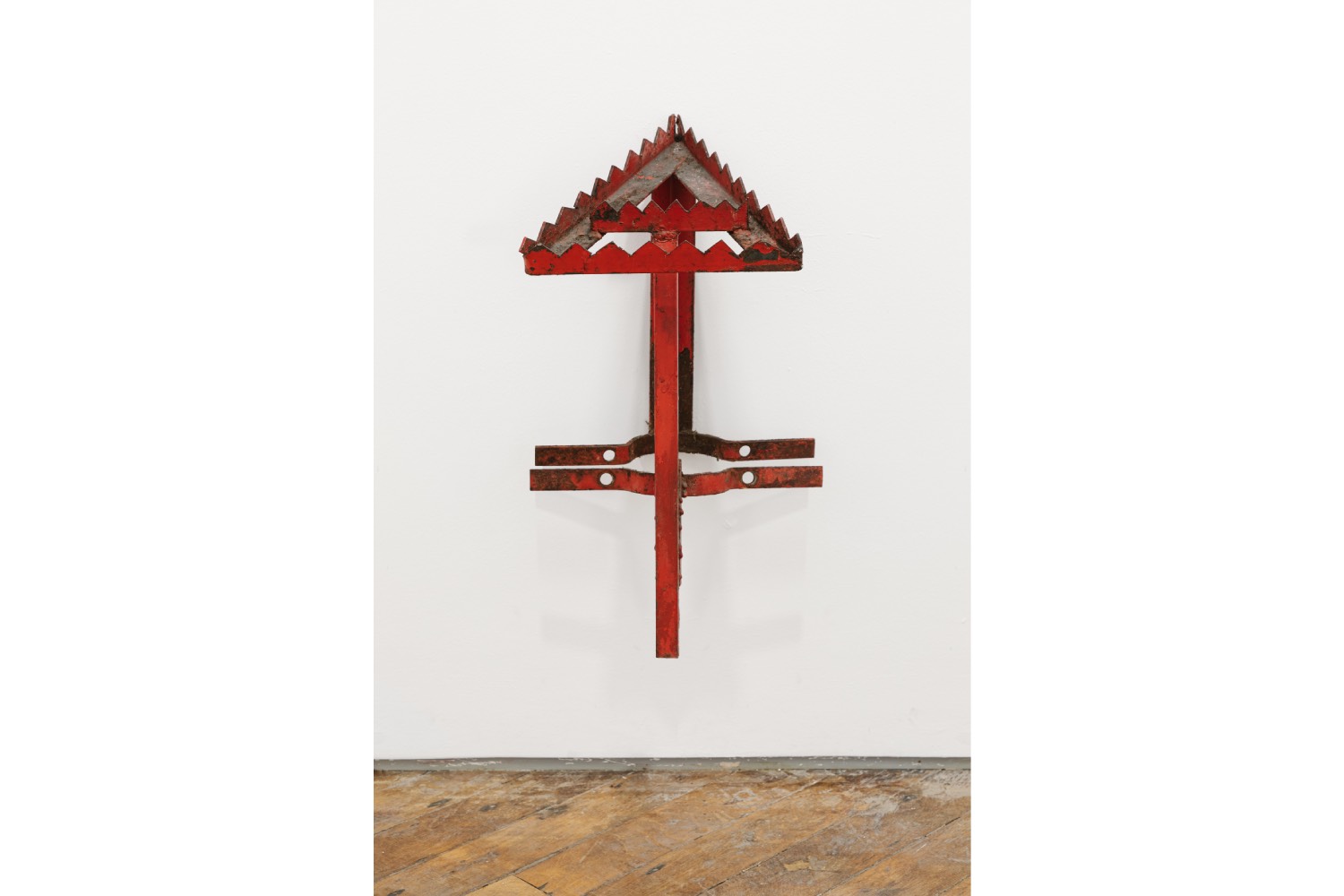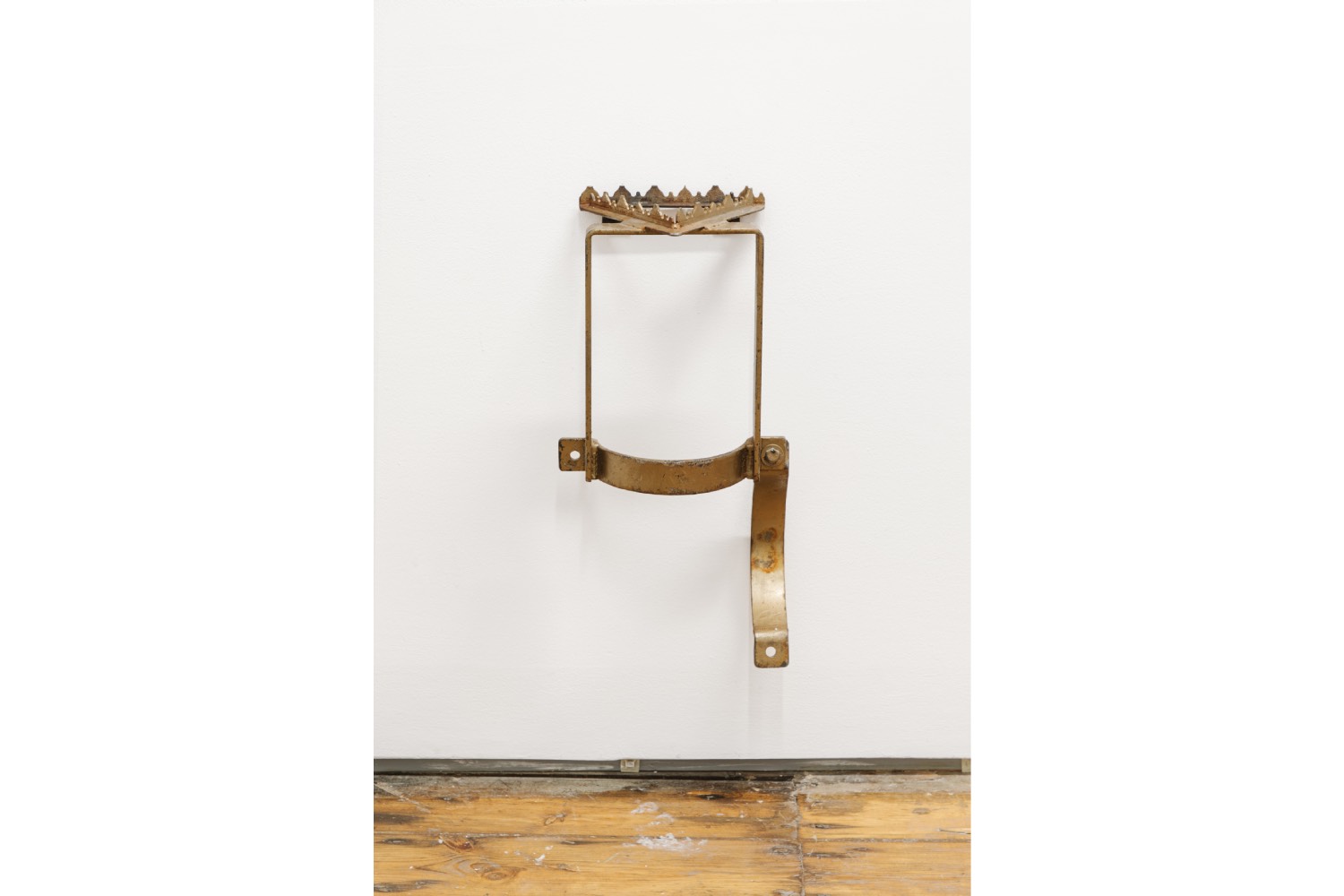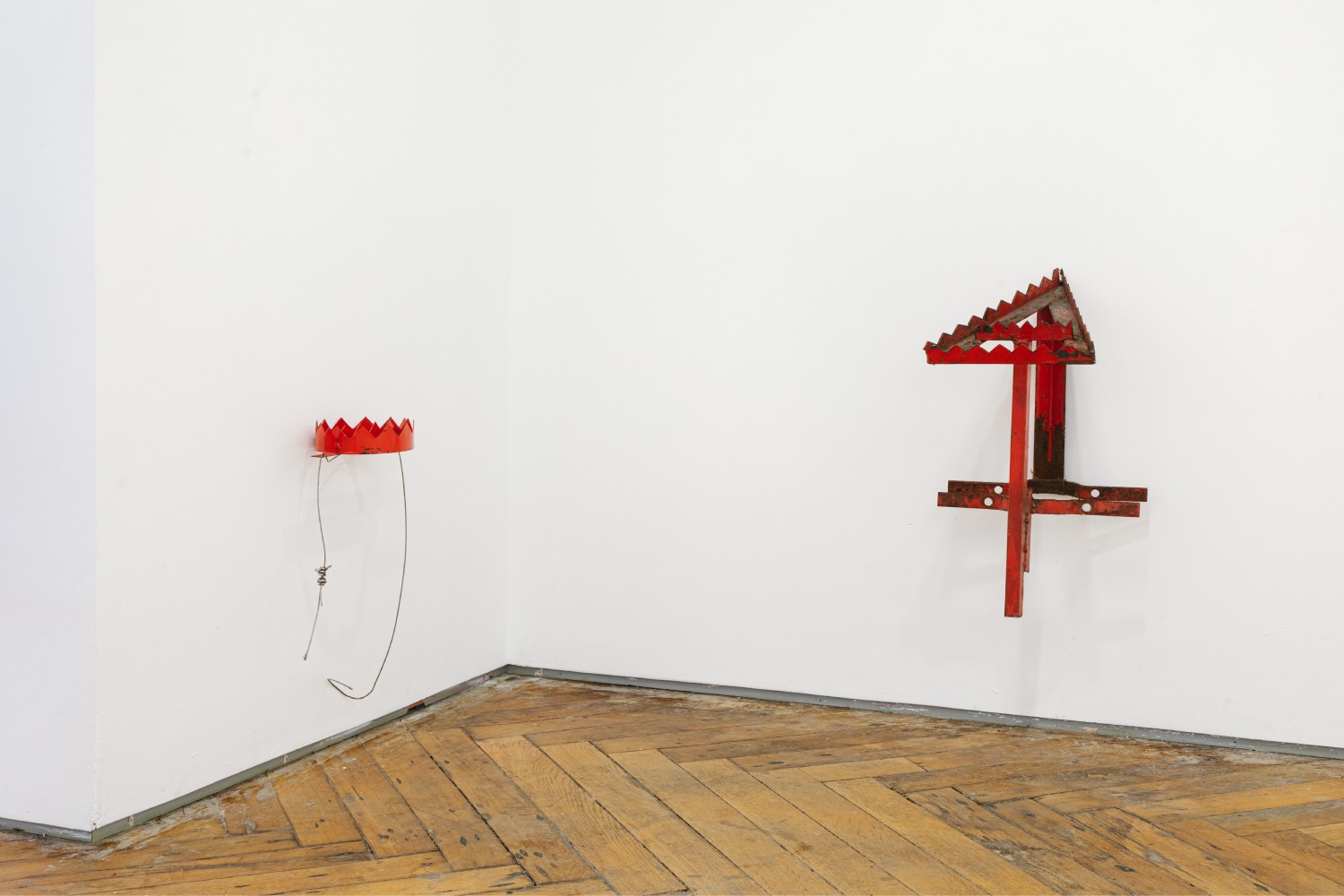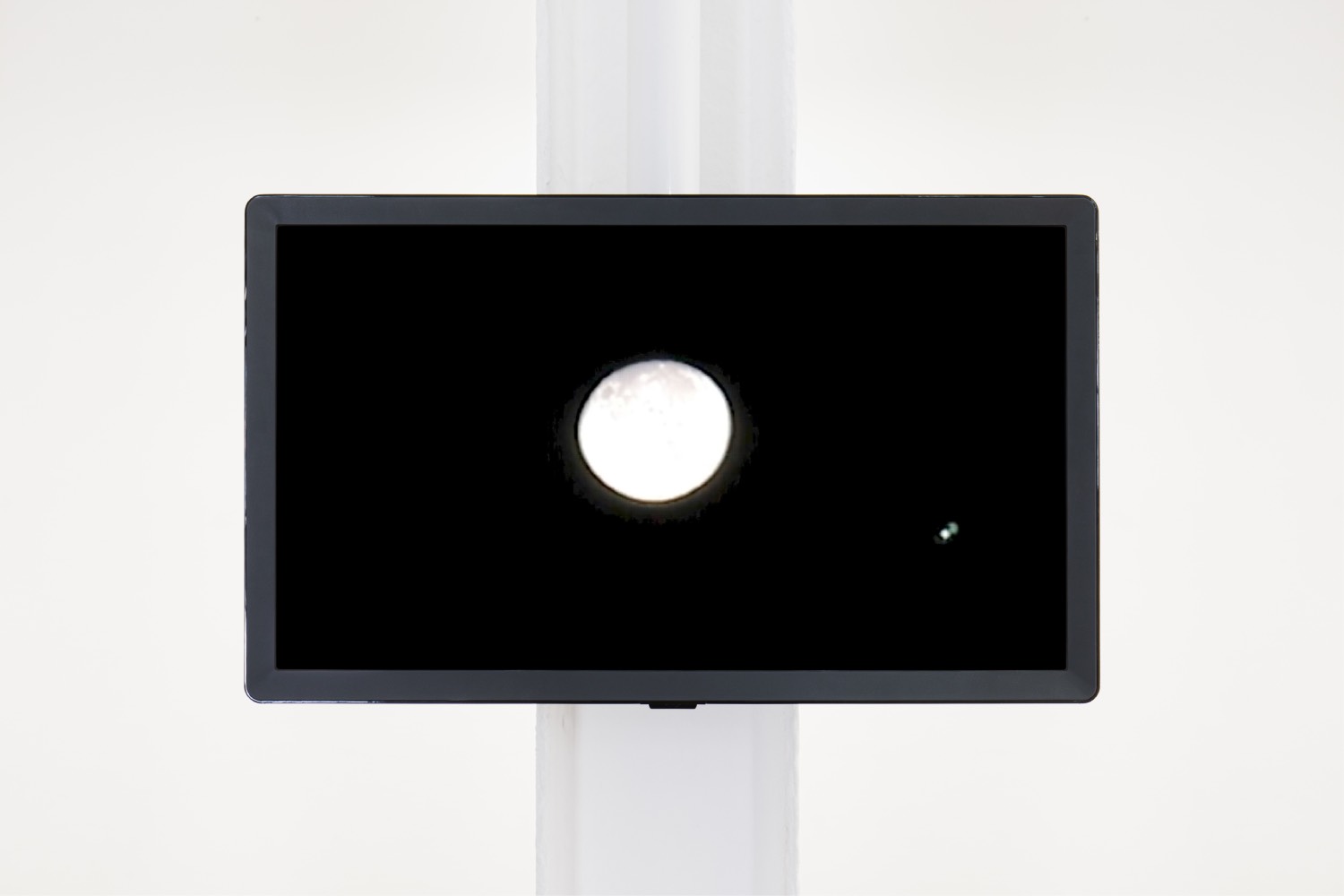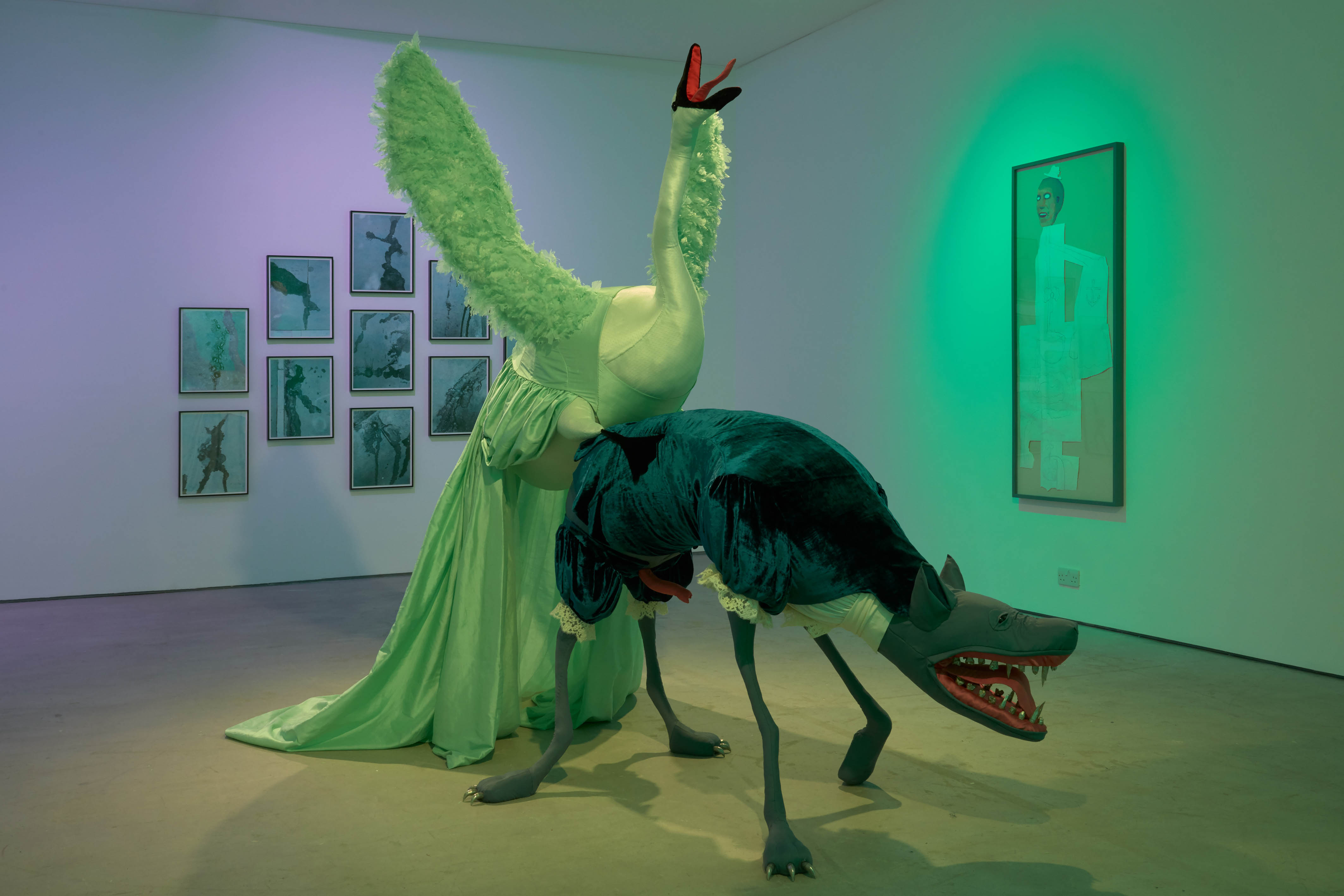The Judas Cradle, a medieval torture device, consisted of a pyramidal “chair” upon which victims were positioned so that their anus was at the pyramid’s tip. Weights were attached to their ankles, and they were slowly, agonizingly impaled upon the rudimentary spike. Severe harm and likely death would occur. In viewing David L. Johnson’s solo exhibition held at The Shop at Sadie Coles HQ, the Judas Cradle was the first thing that came to mind – though this might sound extreme. However, the bulk of Johnson’s works displayed here are unequivocally twenty-first-century torture objects. The only difference is that these modern devices threaten torture rather than enact it. Yet much of the population control that torture achieves is accomplished via threat rather than any guts actually being spilled.
Upon entering the space, curated by Ben Broome, viewers were presented with a central screen displaying the eponymous video work From the Street I Can See the Moon (2014). The video offers a snapshot of New York, recorded on the eve of the opening of the Freedom Tower in 2014, showing the moon and its gradual movements over time in relation to the silhouette of the tower (only briefly fully revealed). A satellite of six characters surrounded this screen: violent sculptural pieces, spiked metal objects that once covered New York standpipes to prevent people from resting or sitting. Despite their rigid nature, there is something limp, despondent about the works. One took the shape of a vibrant red crown, yet wires hung from its sides where Johnson had removed this little guardian from its perch; with its purpose removed, the object was defanged, its aggression rendered silly.
The word “loiter” contains a scruffy, slimy feeling – street corners and alleys, the last few stragglers at an afterparty, getting in people’s way, being a nuisance. Johnson has used the word since 2020 as an umbrella term for a series of ready-mades formed from pieces of hostile architecture illegally sourced from the streets of New York. Johnson exploits these quotidian objects to great effect, operating as antagonisms toward the material forms of privatization that regulate and restrict access to urban space. The spiky characters displayed at The Shop were a new selection of the “Loiter” works, sourced in the weeks running up to the exhibition opening. At play was a form of street-level alchemy whereby the ordinary is transformed into something extraordinary or, at the very least, uncanny. Barbed, jagged, their diminutive stature in the diminutive room (the size of a single bedroom) created a personality reminiscent of the folklore surrounding a pixie — something seemingly benign but harboring malicious, ugly intentions.
In the parenthetical naming of the “Loiter” works, taken from the owner of the building to which the standpipe spikes were attached (Cheryl, Andrew, Kung), a sense humanization emerges. We are reminded that a person is responsible for creating these blatantly spiteful forms. Yet, once removed from their original function and displayed in abstraction, the names create an unsettling relationship with the viewer. The spikes were positioned at the height they were originally found (approximately at the knee), and the viewer had to crouch to see the sculptures properly, adopting a position usually taken when interacting with a small child or a pet. This warping effect coincides with the rational for which these objects were originally made: this is for the good of the public, they say, sweetly. They are intended to protect you from others who may want to sit. But when talking about the public, that never includes everyone. You are not welcome here. These objects are dehumanizing — there is little difference between anti-loitering architecture and the strips of spikes used to deter pigeons.
What must be understood about Johnson’s Loiter works is that what we see in the gallery is the by-product of the most essential aspect of the work. The key lies in the act of removal: the performance of disobedience and “loitering” is the main work for Johnson; the sculptures that are presented post-action are a form of residue. The act is illegal, a protest against capitalism and American imperialism. It’s punk. It’s a crafty maneuver of hoodwinking passersby. It’s a performance: the artist must look how he looks, he must be dressed how he is dressed, he must go unnoticed and yet be in plain sight. Have authority and yet be submissive. The surveillance — of the artist, of the public who encountered the spikes before being placed in the gallery setting, and indeed the gallery visitors themselves — is everything here. Johnson makes most of his work while walking through New York. A flaneur, he finds objects and makes videos, both of which could be considered ready-mades. He creates a specific biography of the city — how it is policed, warped, and re-molded into something that inhibits natural interactions, creating deformed performances of life


